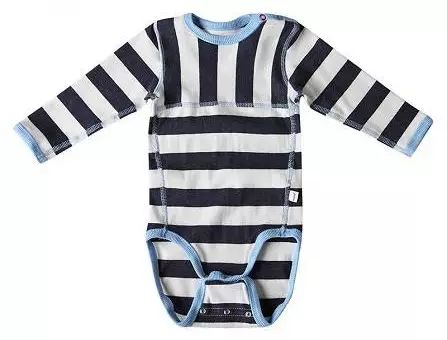If you are careful enough, you will find that some baby clothing labels are sewn on the outside of the clothes. Do you think this is a thoughtful design from the merchant? In fact, this thoughtful design is a national standard.
In the Safety Technical Specification for Textile Products for Infants and Children, it is explicitly stipulated that durability labels sewn on infant clothing that can be worn close to the body should be placed in a position that does not come into direct contact with the skin.

You should know very little about this type of standard, right? Let me popularize some knowledge points about this to everyone!

There are three types of durability labels on clothing: trademark, specification label, and wash label, all sewn on the product. Generally, clothing is sewn on the back collar and seam area inside the garment. For clothing worn by young children, it cannot be sewn on the back collar and seam area inside, but should be sewn on the surface of the garment.
Explanation of terms:
Mark: Also known as “mark”, it means trademark and is taken from the English word “mark”.

In addition to specifying the sewing position of the durability label, there are also assessment requirements for the strength of accessories (durability labels also belong to clothing accessories) in the standard. For example, if one end of the washing label is sewn on the surface seam, and the other side is not fixed, durability labels with a size greater than 3mm but less than or equal to 6mm are sewn with a strength of less than 50N, durability labels with a size greater than 6mm are sewn with a strength of less than 70N, and the tensile strength is poor, making it easy for infants and young children to pull them down and put them into the mouth Stuffing into the ear or inhaling into the nostrils can cause harm to infants and young children. Therefore, it is recommended to sew durability labels on the surface of clothing with fixed stitching on all four sides, which not only avoids assessing the tensile strength of accessories, but also prevents potential harm to infants and young children.



SEO Optimizers Team https://ztd.bardou.online/adm
I offer mutually beneficial cooperation https://ztd.bardou.online/adm